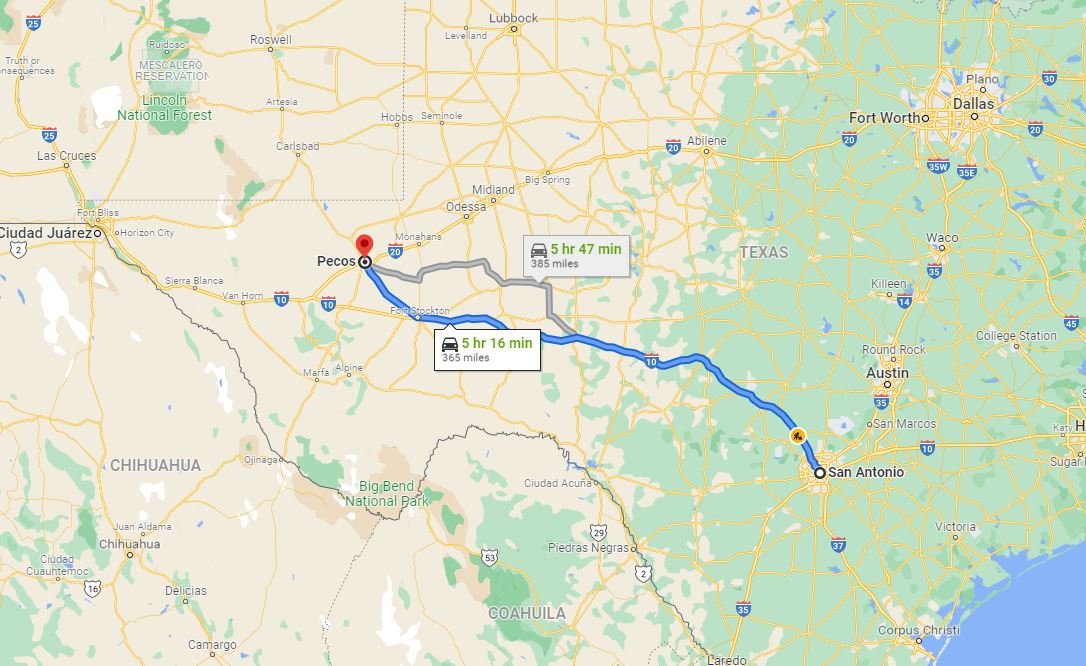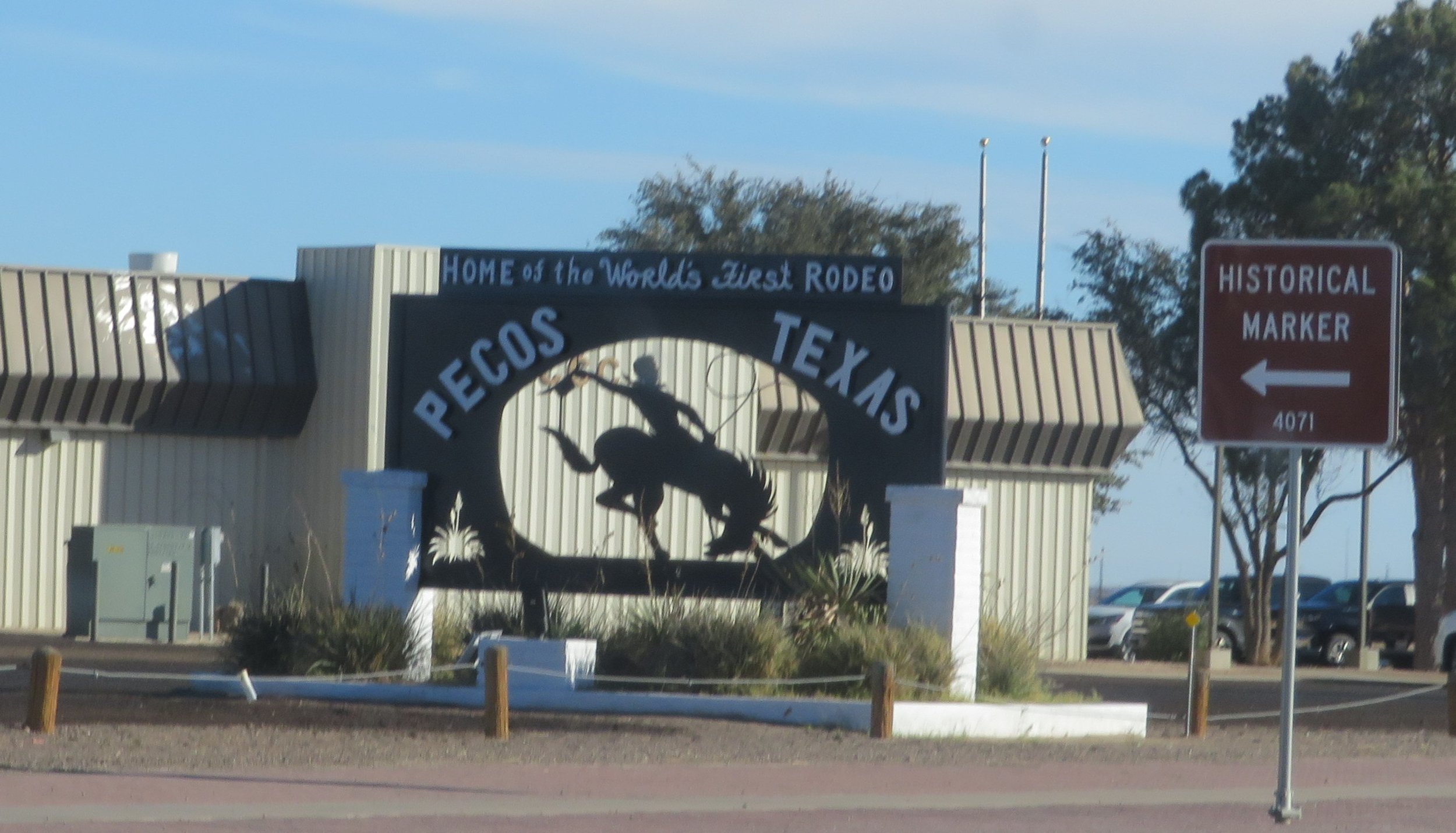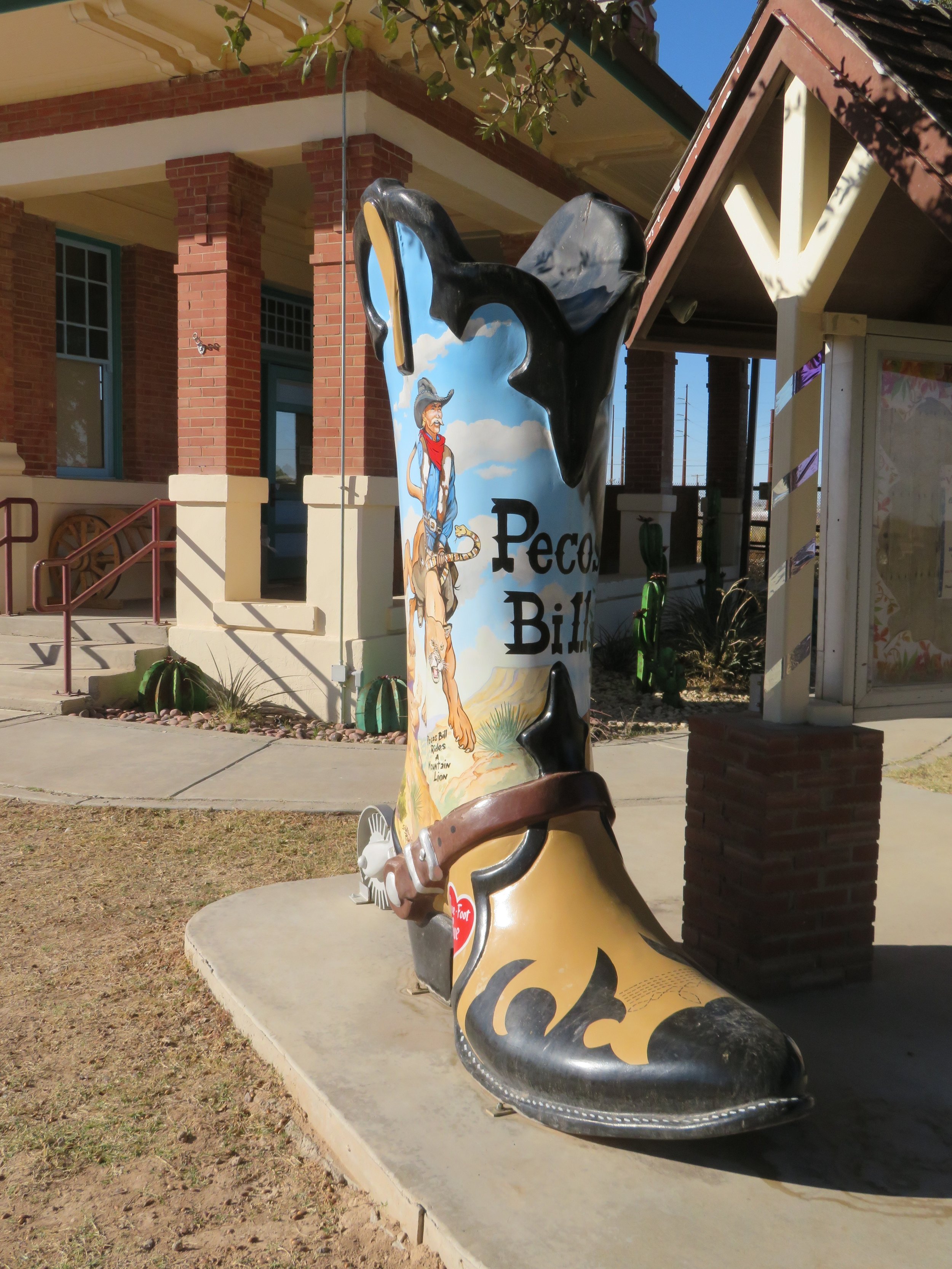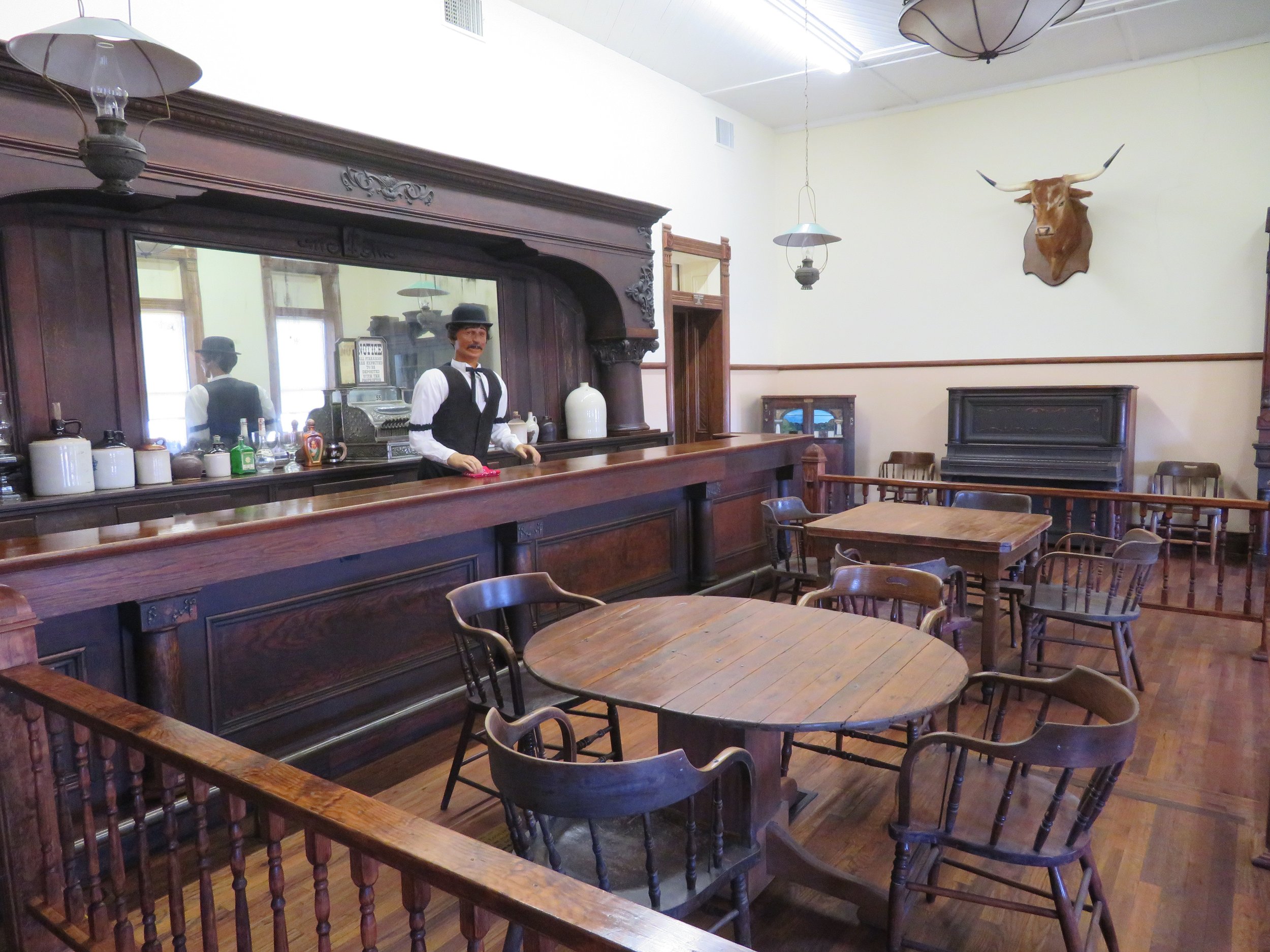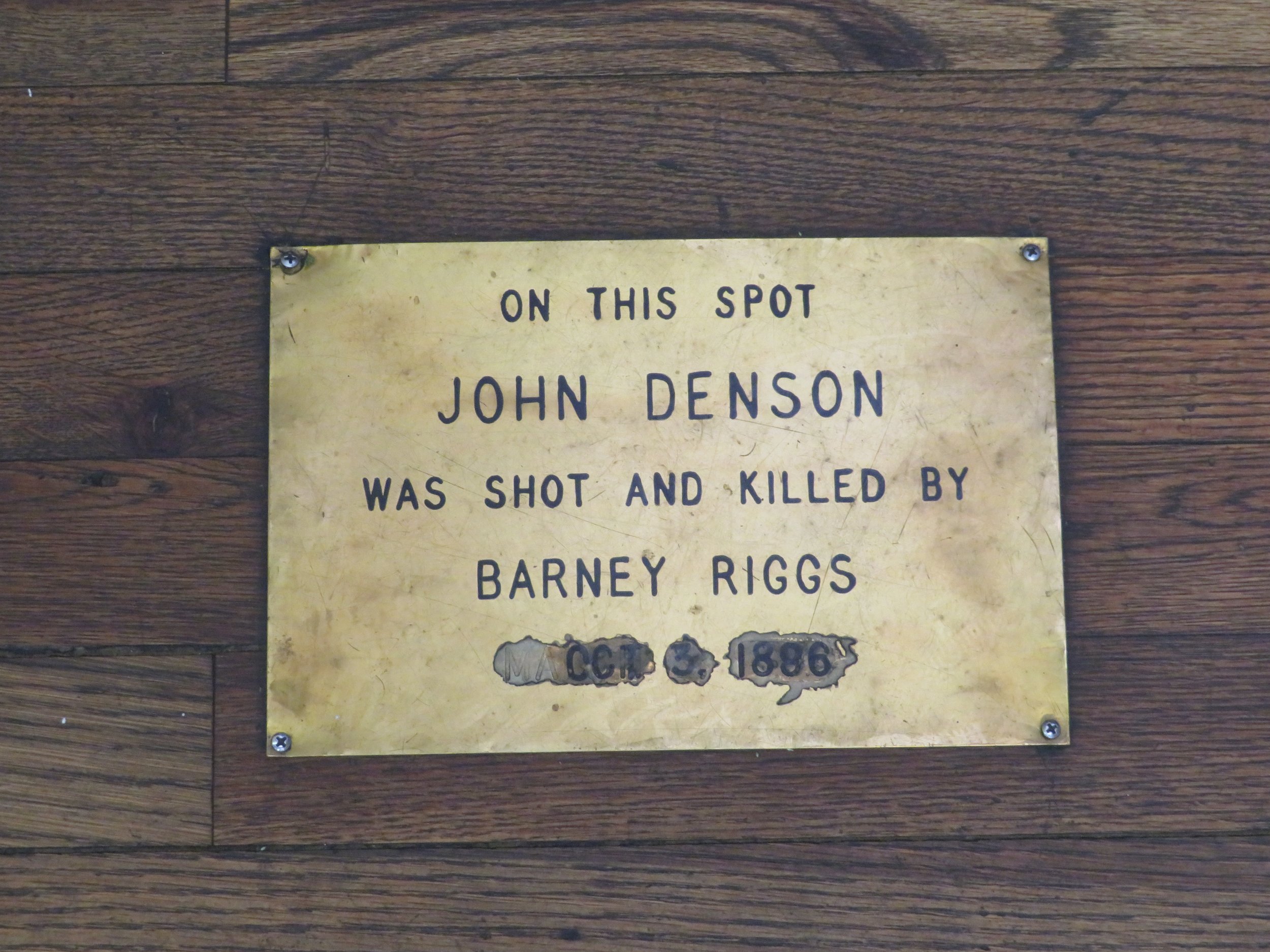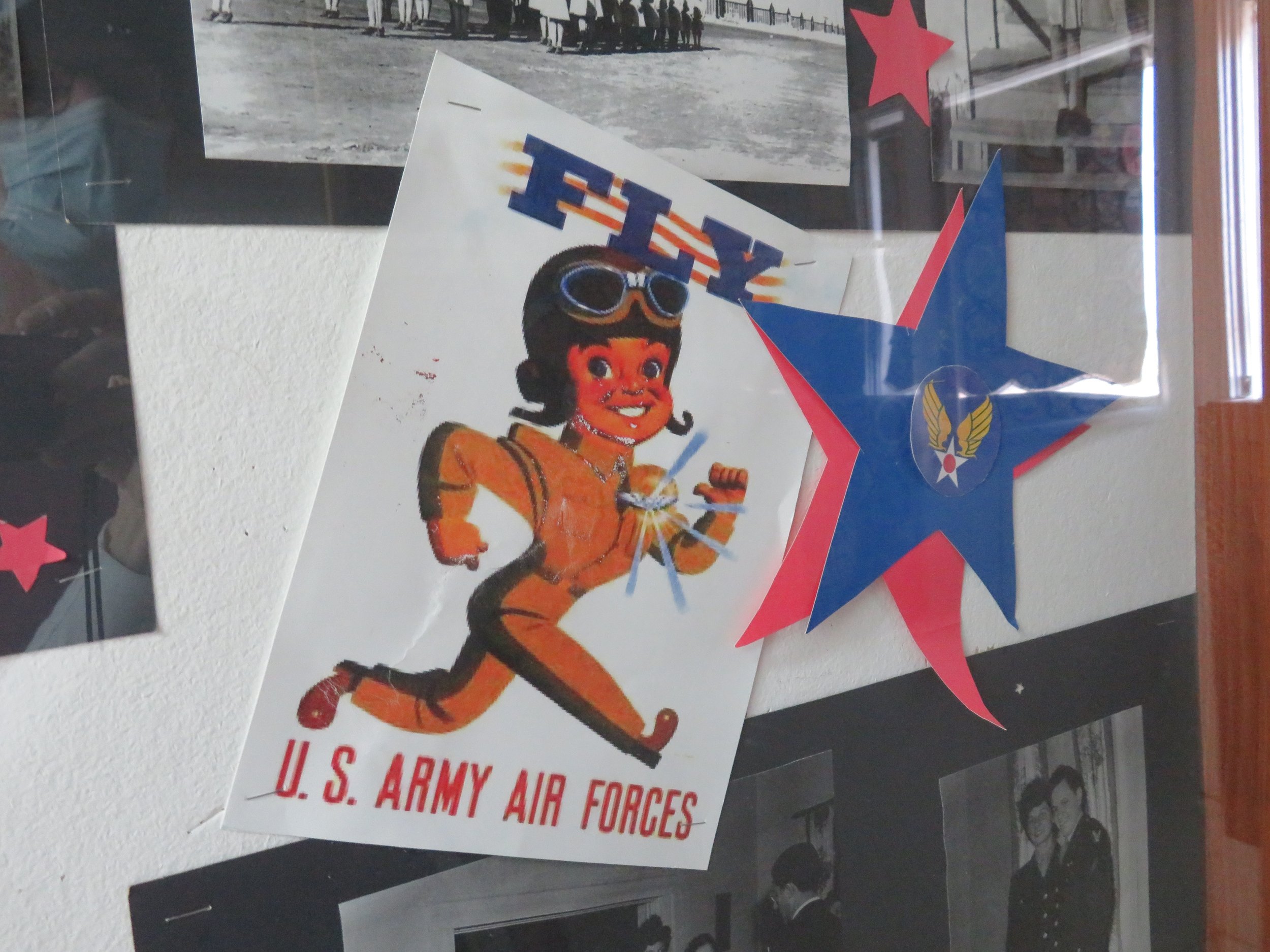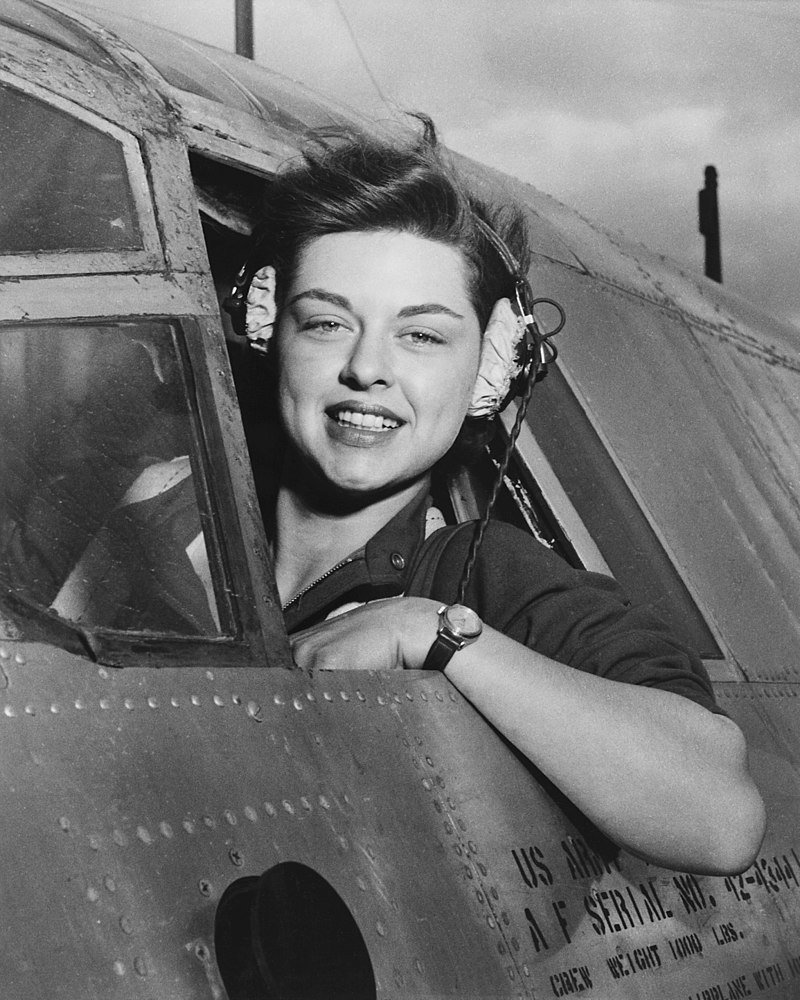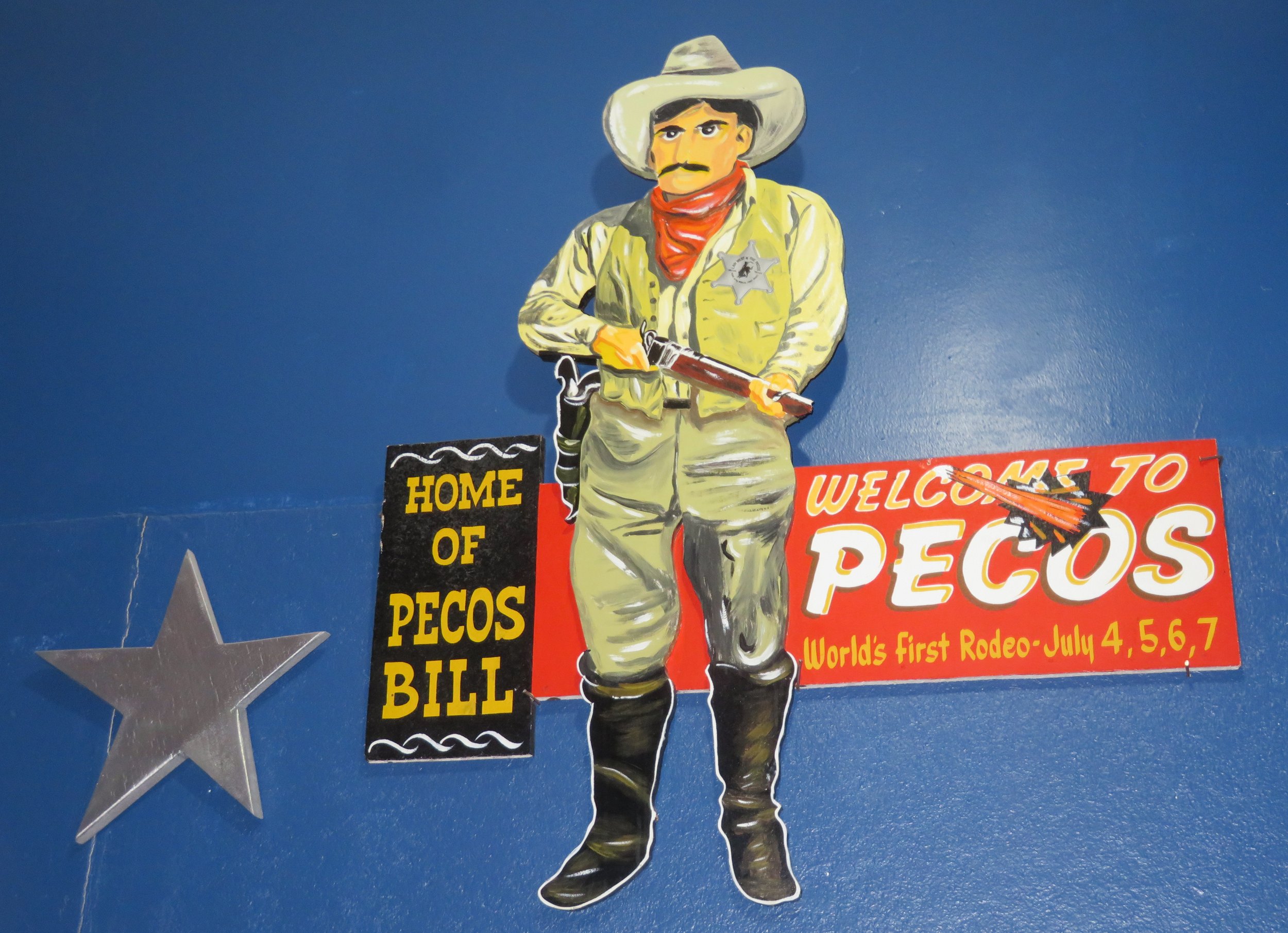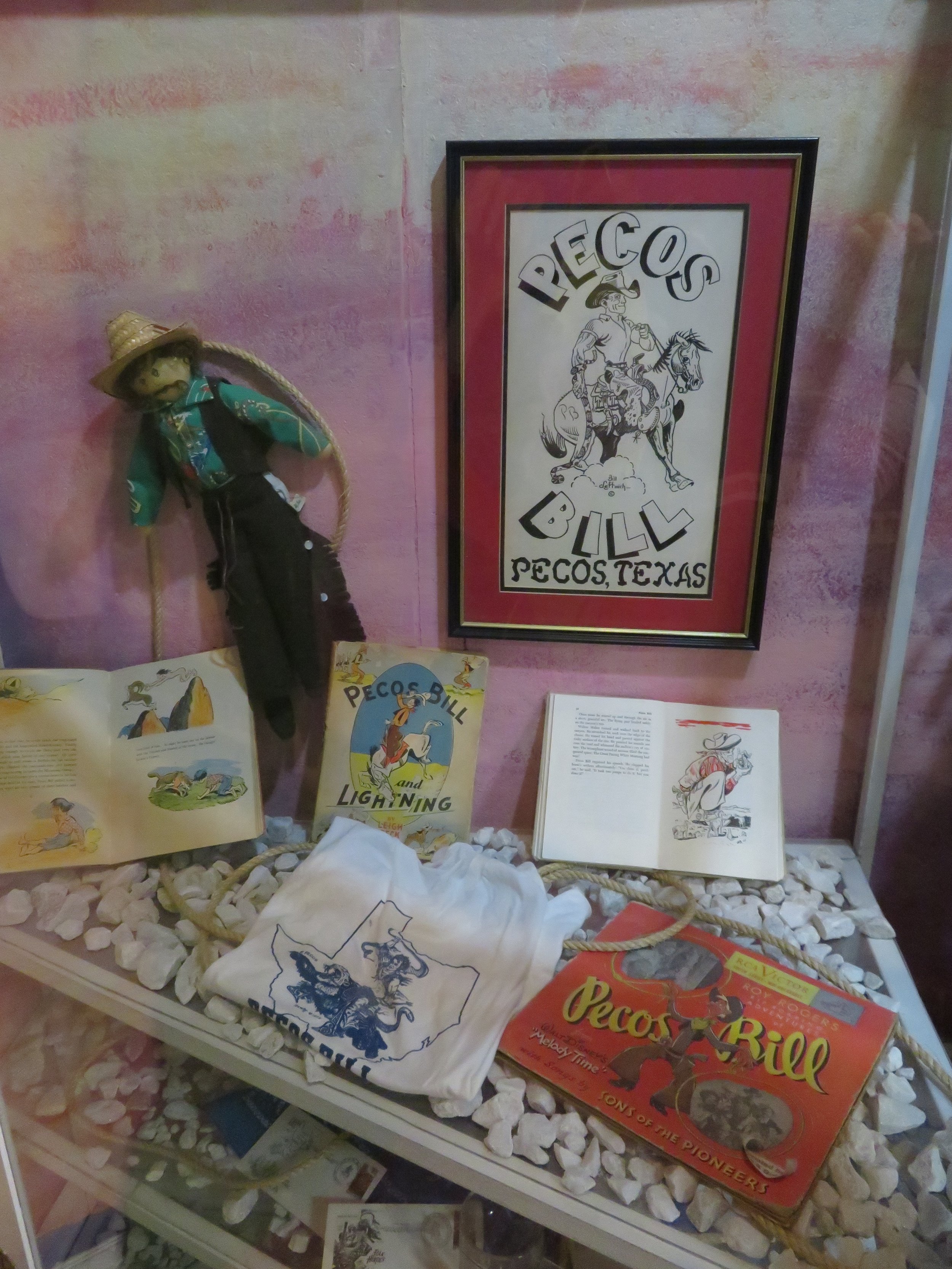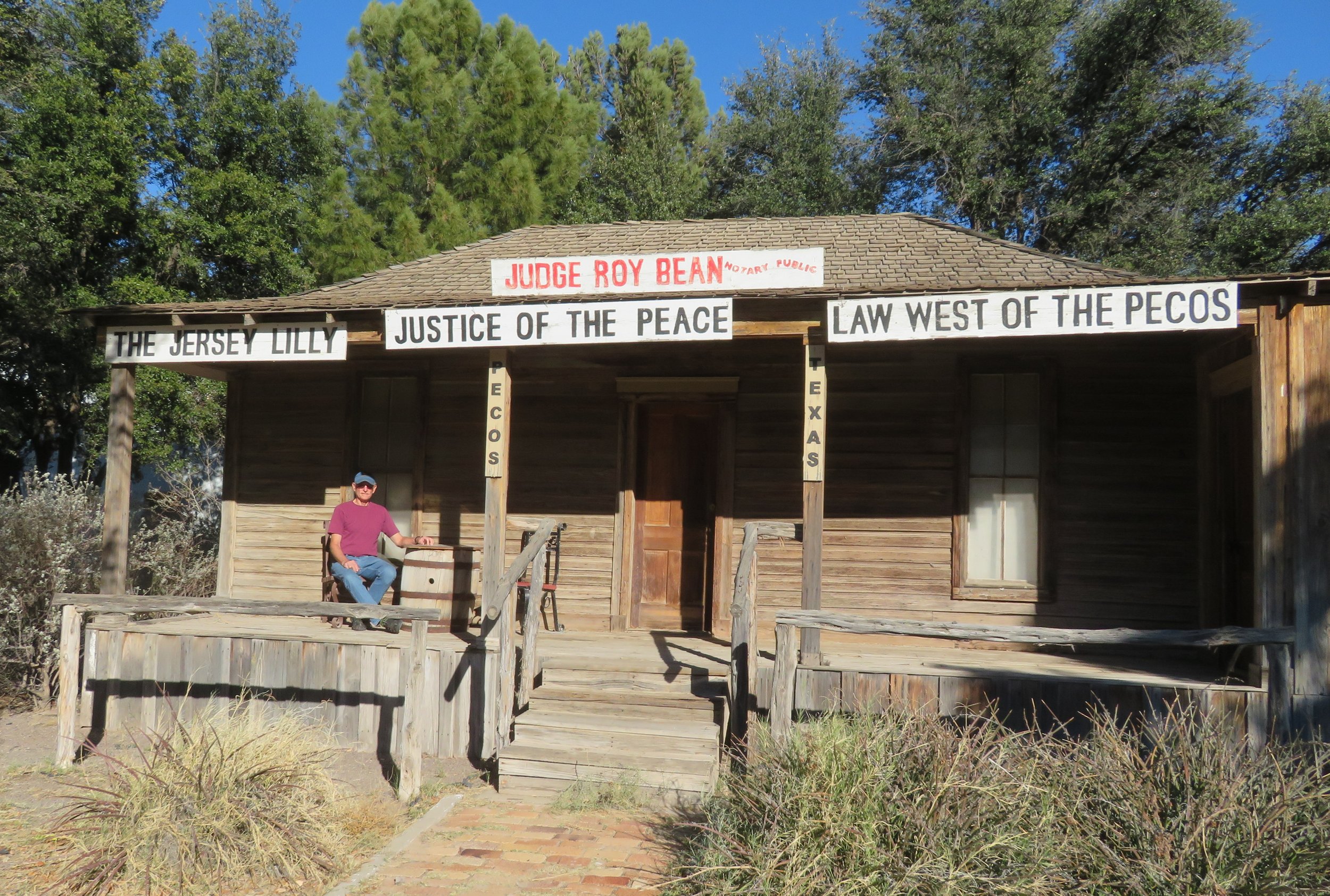West of the Pecos Museum in Pecos, Texas
/“When a bad man dies, he goes either to hell or to the Pecos.” ”
Heading from San Antonio to Pecos, Texas
The weather remained chilly and overcast as we dragged ourselves out of bed and loaded the car en route 365 miles to Pecos, Texas, our destination for the night. We stopped every 100 miles or so to stretch our bones a bit and take time to smell whatever roses might be in the vicinity.
One such stop was the 4,000-square foot Ozona Visitor Center, where a delightful woman named Vickie, greeted us and went out of her way to provide information about her town and the local environs. Ozona, by the way, is the seat and only town in Crockett County, Texas. It touts its county’s namesake, Davy Crockett, ‘Alamo hero’. In addition to local information, Vickie provided lots of brochures and maps about West Texas and the Pecos Trail. It looked interesting, but it would have to wait for another trip. A very short path led through a nature garden highlighting the endemic flora and gave us the opportunity for a brief walk. Then on to Pecos.
Welcome to Pecos, Texas
Knowing where we intended to spend the night in Pecos, Vickie suggested a visit to the West of the Pecos Museum and we thought we’d give it a try. As we entered town, we determined that boots seemed to be the prevalent theme in Pecos, akin to Cheyenne, Wyoming. We learned that the Pecos Boot Trail is a public art project comprised of 16 fiberglass boots decorated by local artists and displayed throughout town. Visitors can pick up a Boot Trail map and collect a stamp at each boot location. Once completed, the Pecos Chamber provides participants with a Pecos Proud prize. We didn’t have time to participate but did appreciate the boots we saw.
On to the museum…
Per the museum brochure “The Texas and Pacific Railroad arrived in the early 1880s and Pecos became a cowboy haunt. (…) Located in the restored 19th-century Orient Hotel, complete with old saloon, the West of the Pecos Museum houses original memorabilia and artifacts from an era long ago.” Each of the hotel’s 50 rooms contains exhibits displaying this old Wild West town’s ranching and railroading past.
The West of the Pecos Museum is housed in the 19th-century Orient Hotel.
At the admission desk, the place still had the feel of the old Orient Hotel.
The old saloon came with an animated bartender who told stories of gunfights and gunslingers. Several signs on the wall pointed out bullet holes as evidence of past altercations. For a closer look, enlarge the thumbnails by just clicking on them.
Every place we stop we find there’s always something new to learn and Pecos didn’t disappoint. For instance, once again quoting the museum’s brochure, “To test their roping and riding skills, locals held a cowboy contest in 1883 that is considered the world’s first rodeo, still held each summer.”
This year’s rodeo, by the way, is scheduled for June 18th, 2022. and the Texas Rodeo Hall of Fame is now housed in Pecos’ historic T&P Train Depot.
A small exhibit caught our eye and provided information about WWII’s Women’s Airforce Service Pilots… who knew?
Elizabeth L. Gremba Gardner… WASP member
Or how about this… Did you ever hear of the Women’s Airforce Service Pilots (WASP) during WWII? We certainly hadn’t, yet 25,000 women applied, 1830 were accepted and 1,074 graduated the program. ‘WASP was a civilian women pilots' organization, whose members were United States federal civil service employees.
Members of WASP became trained pilots who tested aircraft, ferried aircraft, and trained other pilots. Their purpose was to free male pilots for combat roles during World War II.
Despite various members of the armed forces being involved in the creation of the program, the WASP and its members had no military standing.” There was no recognition of this group’s contribution to the war effort until 1971. (grumble, grumble, grumble)
Then, of course, there’s Pecos Bill… a bigger-than-life legendary hero of the Old West, probably related to John Henry and Paul Bunyan somewhere in the family tree. According to Wikipedia, “Pecos Bill is a fictional cowboy and folk hero in stories set during American westward expansion into the Southwest ... These narratives were invented as short stories in a book by Edward S. O'Reilly in the early 20th century and can be considered an early example of folklore.”
There was a small room devoted exclusively to Pecos Bill. According to legend, Bill was born in the 1830s in Texas. As an infant, Bill’s family was in transit via covered wagon further west when Bill fell out unnoticed by the rest of his family near the Pecos River… hence his nickname. He was adopted and raised by a pack of coyotes. Years later his real brother found him and finally convinced Bill that he was not a coyote. Very wily, that Bill. He grew up to become a cowboy and used a rattlesnake named Shake as a lasso and another snake as a little whip. His horse was named Widow-Maker, sometimes also known as Lightning.
A statue of Pecos Bill lassoing a twister with the help of of Shake, his rattlesnake pal.
Many landmarks are attributed to our hero. He is said to have created the Gulf of Mexico when a drought in Texas was so horrible, he rushed to California and lassoed up a storm cloud, and brought it home. He evidently overdid it because it rained so much that the Gulf of Mexico was created. In another story, when he and his horse got stranded in the desert and needed water, Bill grabbed a stick and dug the Rio Grande River. On one of his adventures, Pecos Bill managed to lasso a twister. It was also said that he once wrestled the Bear Lake Monster for several days until Bill finally defeated it. What a guy!
We wandered upstairs and down, in and out of rooms, through memorabilia and the town’s Old West memories. Back outside, we took a stroll around the grounds and got a kick out of a replica of Judge Roy Bean’s saloon… the only law west of the Pecos.
Fort Bowie is still on the agenda… and of course, The Thing will indeed make its appearance soon. Be on the lookout.


